Abstract
Postoperative septicaemia with infective endocarditis is a recognized complication of open-heart surgery, in particular homograft or prosthetic replacement of cardiac valves. Several infective organisms, both bacterial and fungal, have been incriminated but infection due to tubercle bacilli has not, to our knowledge, been reported. The clinicopathological features of this condition are discussed. During a five-year period, over 800 homograft replacements in the aortic and/or mitral positions have been performed at Harefield Hospital. Seven cases of miliary tuberculosis following homograft valve replacement are descrbied here. In three, there was a past history suggestive of tuberculosis infections but necropsy failed to reveal any caseous or other tuberculous lesion apart from recent miliary tuberculosis. Vegetations on the homograft valves contained microcolonies of acid-fast bacilli in most cases. Tubercle bacilli of the human type were recovered by culture or guinea-pig inoculation in six of the seven cases, and in three the diagnosis was established during life; two of these survived on antituberculosis chemotherapy. The onset of symptoms varied from a few weeks to 12 months after operation. The main presenting symptom was intermittent pyrexia. In two patients the diagnosis was made on radiological and clinical grounds and in both, tubercle bacilli were grown from drill biopsy specimens of lung tissue. The source of infection was presumed to be the homograft valves contaminated in the postmorten room. The antibiotic mixture used in the sterilization of the homografts was not effective against tubercle bacilli.
Full text
PDF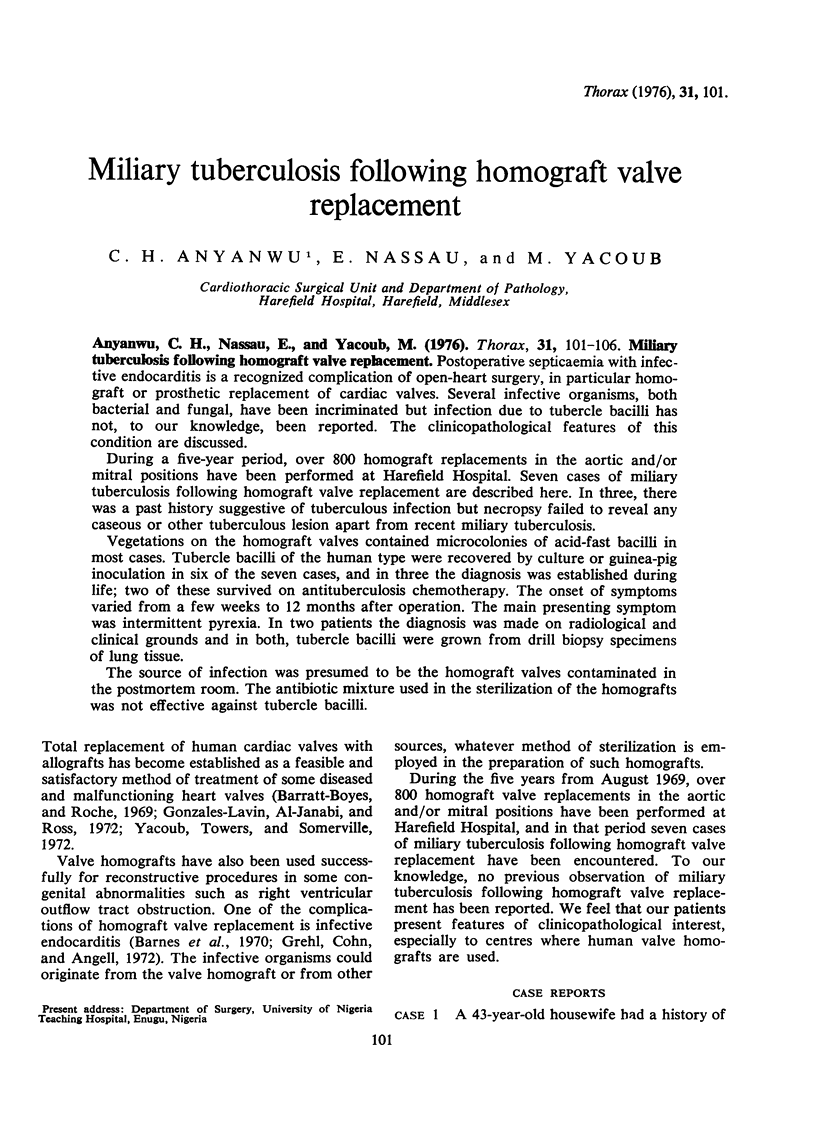
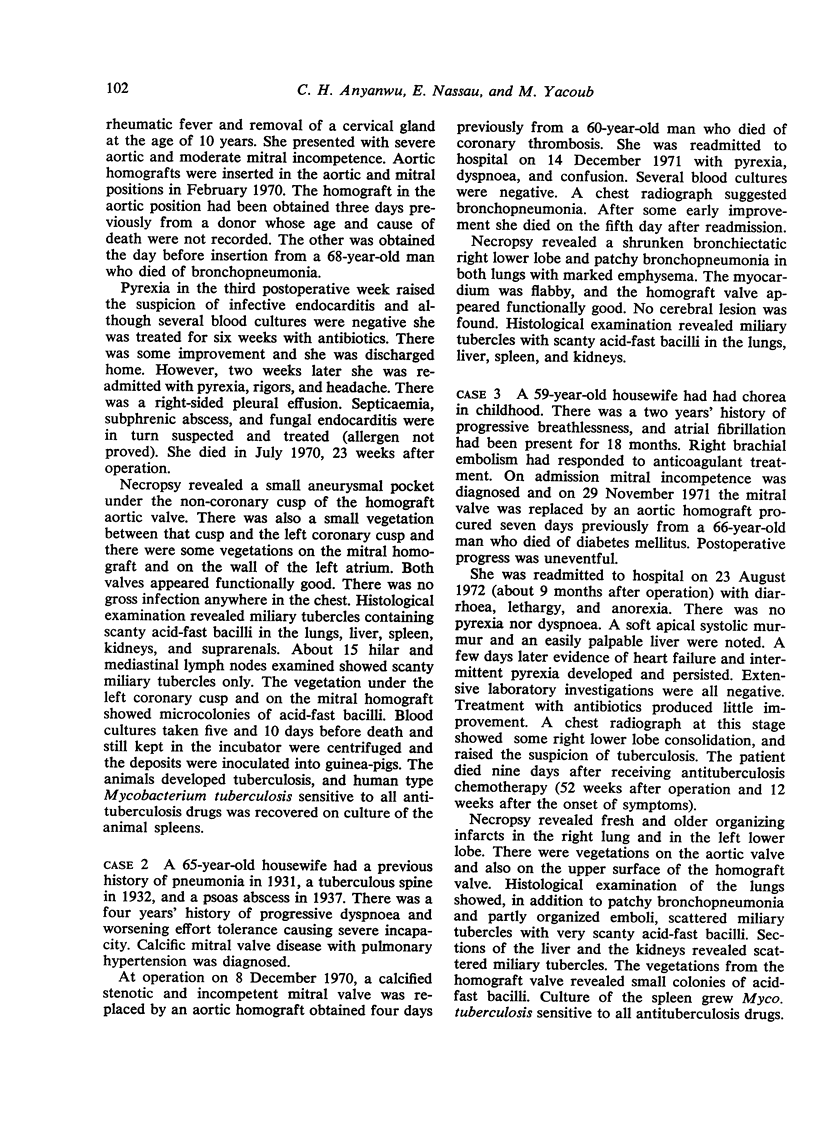
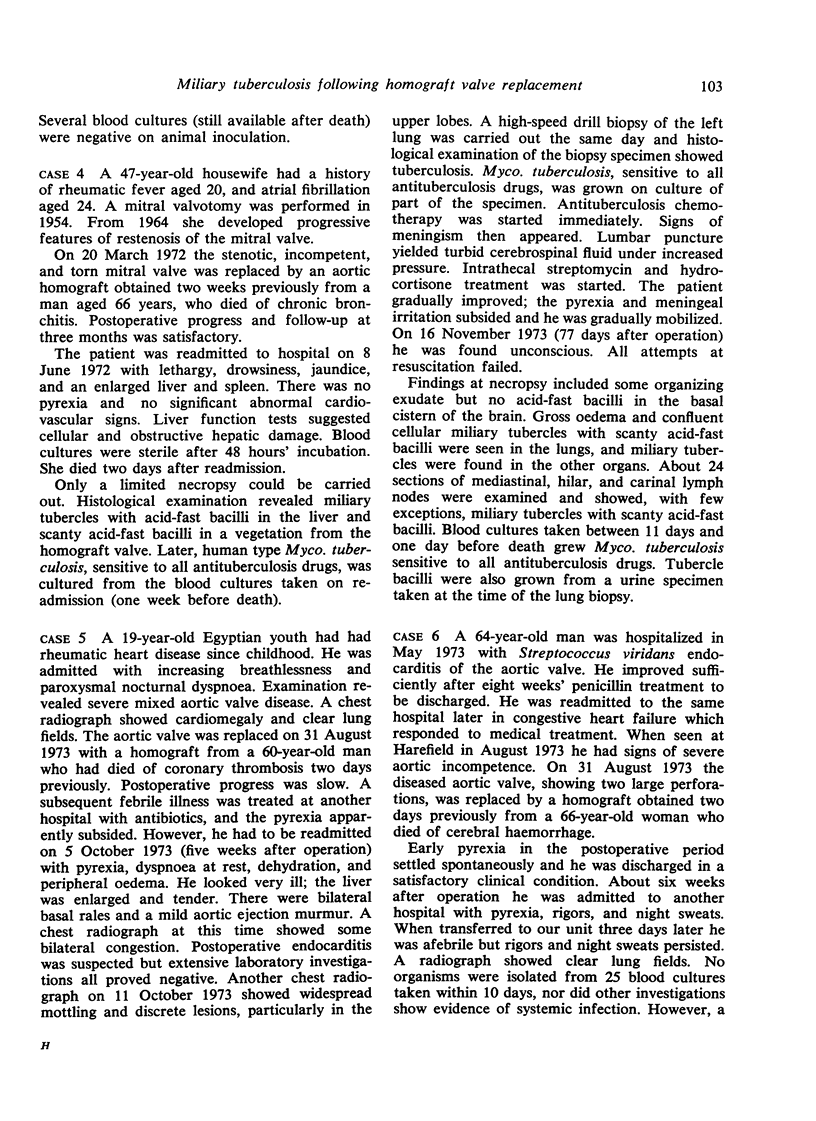
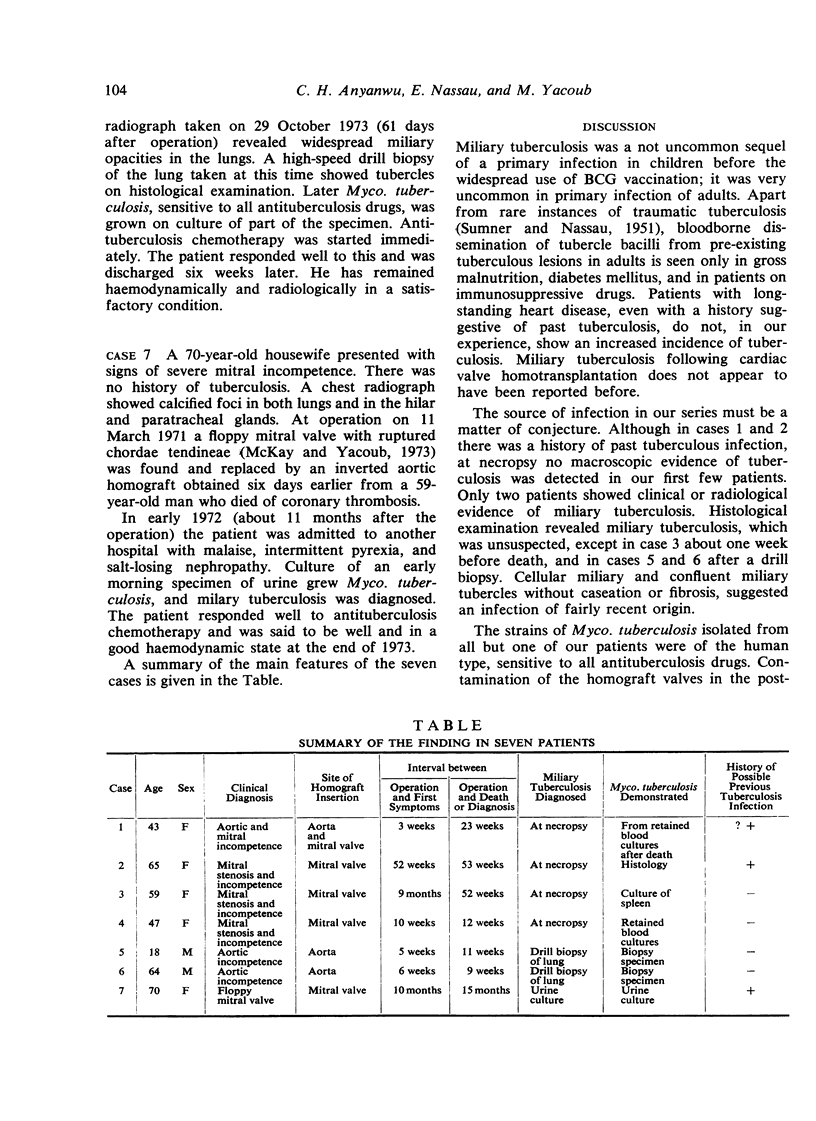
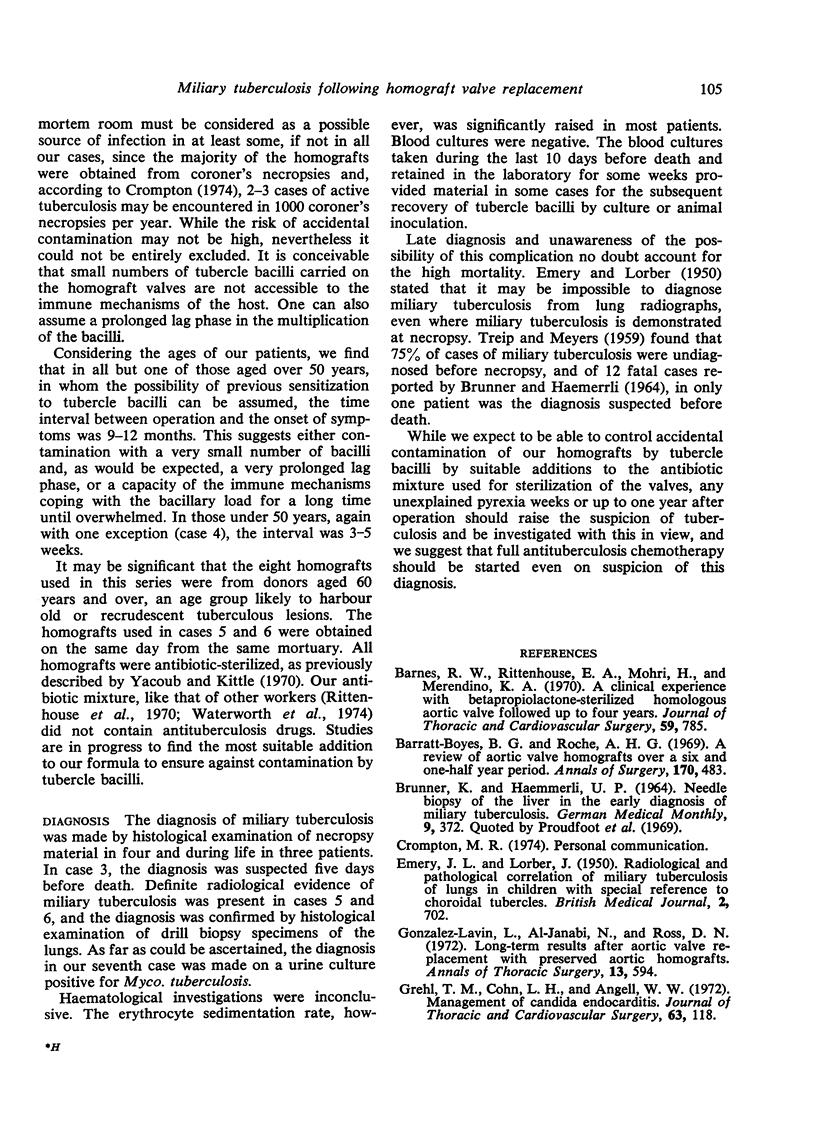
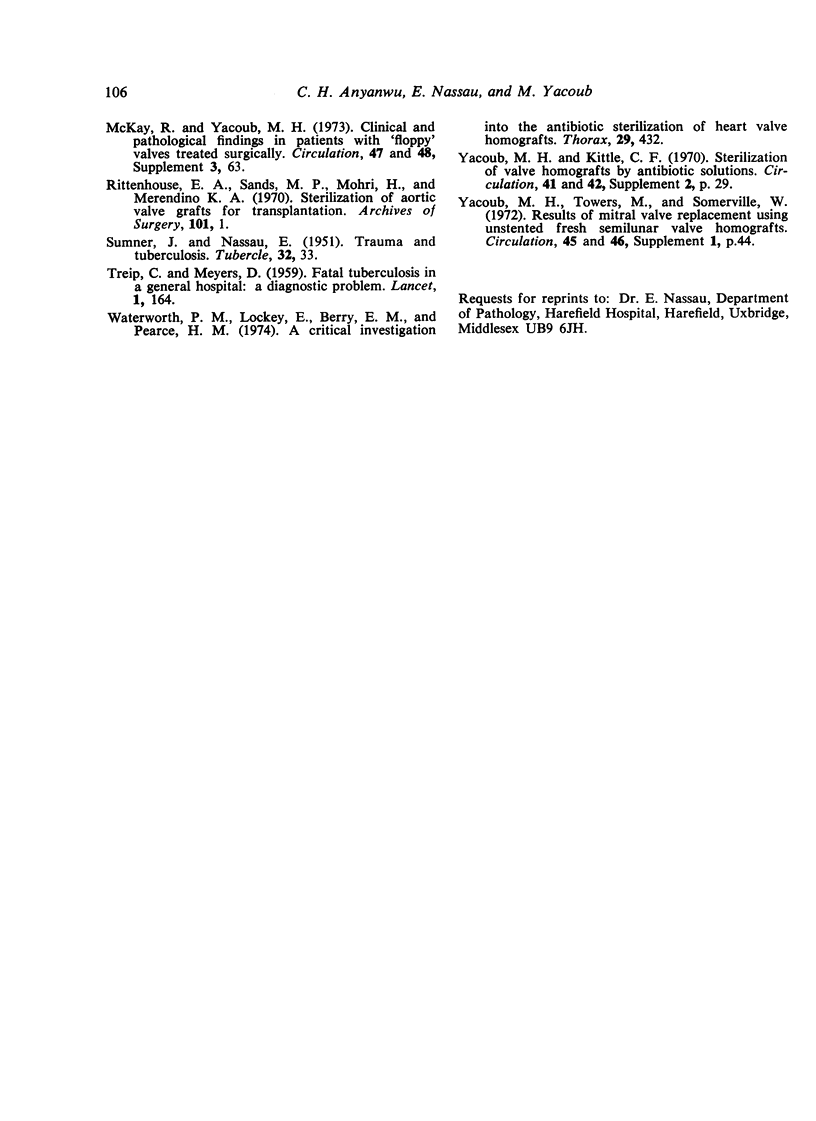
Selected References
These references are in PubMed. This may not be the complete list of references from this article.
- Barnes R. W., Rittenhouse E. A., Mohri H., Merendino K. A. A clinical experience with the betapropiolactone-sterilized homologous aortic valve followed up to four years. J Thorac Cardiovasc Surg. 1970 Jun;59(6):785–793. [PubMed] [Google Scholar]
- Barratt-Boyes B. G., Roche A. H. A review of aortic valve homografts over a six and one-half year period. Ann Surg. 1969 Sep;170(3):483–492. doi: 10.1097/00000658-196909010-00016. [DOI] [PMC free article] [PubMed] [Google Scholar]
- EMERY J. L., LORBER J. Radiological and pathological correlation of miliary tuberculosis of lungs in children, with special reference to choroidal tubercles. Br Med J. 1950 Sep 23;2(4681):702–704. doi: 10.1136/bmj.2.4681.702. [DOI] [PMC free article] [PubMed] [Google Scholar]
- Gonzalez-Lavin L., al-Janabi N., Ross D. N. Long-term results after aortic valve replacement with preserved aortic homografts. Ann Thorac Surg. 1972 Jun;13(6):594–606. doi: 10.1016/s0003-4975(10)65177-6. [DOI] [PubMed] [Google Scholar]
- Grehl T. M., Cohn L. H., Angell W. W. Management of Candida endocarditis. J Thorac Cardiovasc Surg. 1972 Jan;63(1):118–120. [PubMed] [Google Scholar]
- TREIP C., MEYERS D. Fatal tuberculosis in a general hospital; a diagnostic problem. Lancet. 1959 Jan 24;1(7065):164–166. doi: 10.1016/s0140-6736(59)90366-6. [DOI] [PubMed] [Google Scholar]
- Waterworth P. M., Lockey E., Berry E. M., Pearce H. M. A critical investigation into the antibiotic sterilization of heart valve homografts. Thorax. 1974 Jul;29(4):432–436. doi: 10.1136/thx.29.4.432. [DOI] [PMC free article] [PubMed] [Google Scholar]


